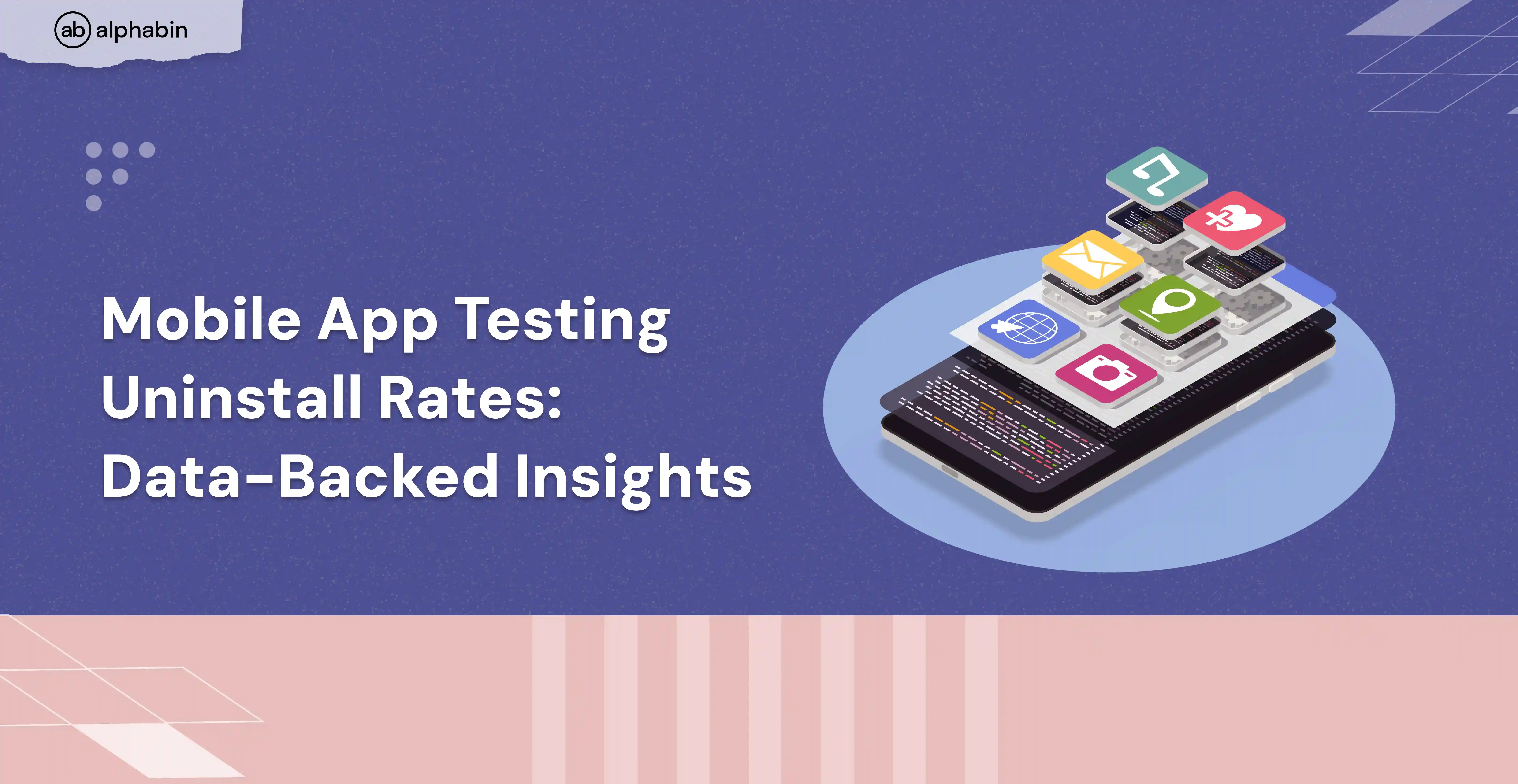A/B testing services
Use data to make decisions. We’ll help you tweak and improve every part of your app’s experience for the best results.


































.webp)
Navigating product launch challenges
Without A/B Testing, businesses may face significant challenges, from uncertainty in optimal strategies to missed opportunities for data-driven improvements.
Missed opportunities
Missed opportunities

Without the chance to test and make changes, businesses miss out on ongoing improvements that can make the product better.
Increased risk
Increased risk

The absence of A/B testing may leave clients without a thorough product validation, increasing the likelihood of crashes.
Lower conversion rate
Lower conversion rate

Without A/B Testing, there are fewer chances to improve conversion rates, which could stop key business numbers from getting better.
Reduced user adoption
Reduced user adoption

Clients might have a hard time figuring out if users will accept the product, which could make it harder to get a lot of people to use it.
A/B Test your way to success
Our services show you the way forward, helping you make decisions based on data and unlock:
More revenue
Find issues that are stopping conversions and increase revenue by a fifth with targeted improvements.
Crashproof your product
Cut crashes by 50% with careful testing, making sure users have a smooth experience.
Improve conversion
Make key numbers go up 35% by improving every possible click and user journey.
Gain user confidence
Get clear insights into what users prefer, leading to product rollouts that are 40% smoother.
Interested in our A/B software testing? Reach out to us.

.webp)
What we test
We use statistical A/B testing to find the best options and use data to grow.
Making hypotheses
We work with you to make clear, measurable goals and turn them into hypotheses we can test.
Designing and Implementing variants
We use feature flags, visual editors, or code injections to make and put in place testable variations easily.
Allocating traffic and Randomizing
We use stratified sampling or statistical randomization techniques to collect data that isn’t biased.
Analyzing statistics
We use Bayesian or frequentist approaches to measure statistical significance and calculate confidence intervals.
Testing multivariate
We look at the interaction effects of multiple variables, going beyond simple A/B comparisons.
Using multi-armed bandit algorithms
We use advanced adaptive testing algorithms for dynamic optimization and real-time insights.
Reporting and Visualizing data
We give clear, actionable insights through visual dashboards and detailed reports.
Integrating with analytics platforms
We connect easily with your existing analytics stack for holistic performance monitoring.
And other validations like
User Experience testing, Performance testing, Security testing, and Accessibility checks.

A/B testing is not about proving your intuition right or wrong, but about finding the best solution for your users.
.webp)
Client Successes
We assisted our client in the HealthTech sector improve their product with our A/B Software Testing.
Challenges
Challenges
Our client in the HealthTech business had problems improving digital solutions for better user engagement, conversion rates, and overall user satisfaction.
Solutions
Solutions
Our A/B Testing Services used a strategic approach, doing controlled experiments to check different versions.
Result
Result
Working together, we increased user engagement by 38%, improved conversion rates by 30%, and made the product perform better overall.
Approach for product excellence
We employ a systematic and data-driven approach to optimize user experiences, increase engagement, and boost conversion rates.
1.

Setting Goals: We work with stakeholders to set clear, measurable goals for testing that match business objectives.

Making Hypotheses: We make hypotheses to test specific changes, making sure our approach to improvement is structured and targeted.

Identifying KPIs: We define key performance indicators (KPIs) to measure and assess the impact of A/B testing variations accurately.
2.

Randomizing Test Groups: We randomly assign users to control and variant groups to make sure results are unbiased and statistically valid.

Designing Variations: We make variations focusing on specific elements like UI, content, or functionality, making sure we understand the impact of each change.

Determining Sample Size: We calculate the right sample sizes to make sure results are statistically significant and reliable.
3.

Testing Protocols in Order: We use testing methods in order to watch results over time and find trends or changes.

Multivariate Testing: We test with multiple changes to see the combined effect and find the best combination.

Consistent Testing Environment: We make sure the testing environment is consistent to reduce outside factors and get reliable insights into user behavior.
4.

Analyzing Statistics: We use strong statistical techniques to analyze test results and find out how significant observed changes are.

Segmenting Users: We do detailed user segmentation analysis to see how different user groups respond to changes.

Analyzing Behavior: We analyze user behavior metrics to understand what changes and why, which gives us useful insights for future versions.
5.

Data-Driven Decision Making: We use insights from A/B testing to make improvements over time, making sure we’re always optimizing.

Reporting Fully: We give detailed and clear reports on A/B test results, including visualizations and recommendations.

Sharing Knowledge: We share what we’ve learned and best practices with stakeholders to encourage a culture of making decisions based on data.
.webp)
Why choose Alphabin?

Flexible engagement models
Choose from flexible projects, retainers, or hourly rates to suit your budget and project requirements.

Measurable improvements
Faster test cycles, reduced costs, and improved quality with quantifiable results.

Unbiased insights
Our independent perspective ensures objective feedback, highlighting critical issues and opportunities for improvement.
.webp)
Our Resources
Explore our insights into the latest trends and techniques in SAP Testing.

Mobile App Testing Device Fragmentation: 2025 Benchmarks
- Sep 30, 2025
Learn 2025 benchmarks on device fragmentation in mobile app testing. See coverage costs and QA challenges across platforms.

Mobile App Testing Uninstall Rates: Data-Backed Insights
- Sep 20, 2025
Discover uninstall rates in mobile app testing with 2025 data. Understand why apps get removed and how QA teams can respond.
Frequently Asked Questions

Also known as split testing, it compares two versions (A and B) of a web page, app, or other digital content to determine which one performs better. It optimizes digital experiences by providing data-driven insights into user behavior, preferences, and the impact of design or content variations on key metrics.

Our A/B Software Testing covers various experiments, including websites, email campaigns, and mobile apps. We tailor our services to align with clients' specific goals across industries, focusing on improving conversion rates, user engagement, and overall digital performance.

We employ statistical methodologies such as t-tests and chi-square tests to analyze A/B test results. Sample size calculations are based on desired statistical power, significance level, and expected effect size. Ensuring statistical significance is crucial to draw valid conclusions from A/B test data.

Addressing external factors involves careful experimental design and data segmentation. We account for seasonality by analyzing trends over time, and for marketing campaigns, we may segment data to isolate the impact of the A/B test. Sensitivity analysis is performed to assess the robustness of results to potential external influences.
Automate your regression 5x faster with AI
See How in a Quick 15-Min Demo




















.svg)



.svg)
